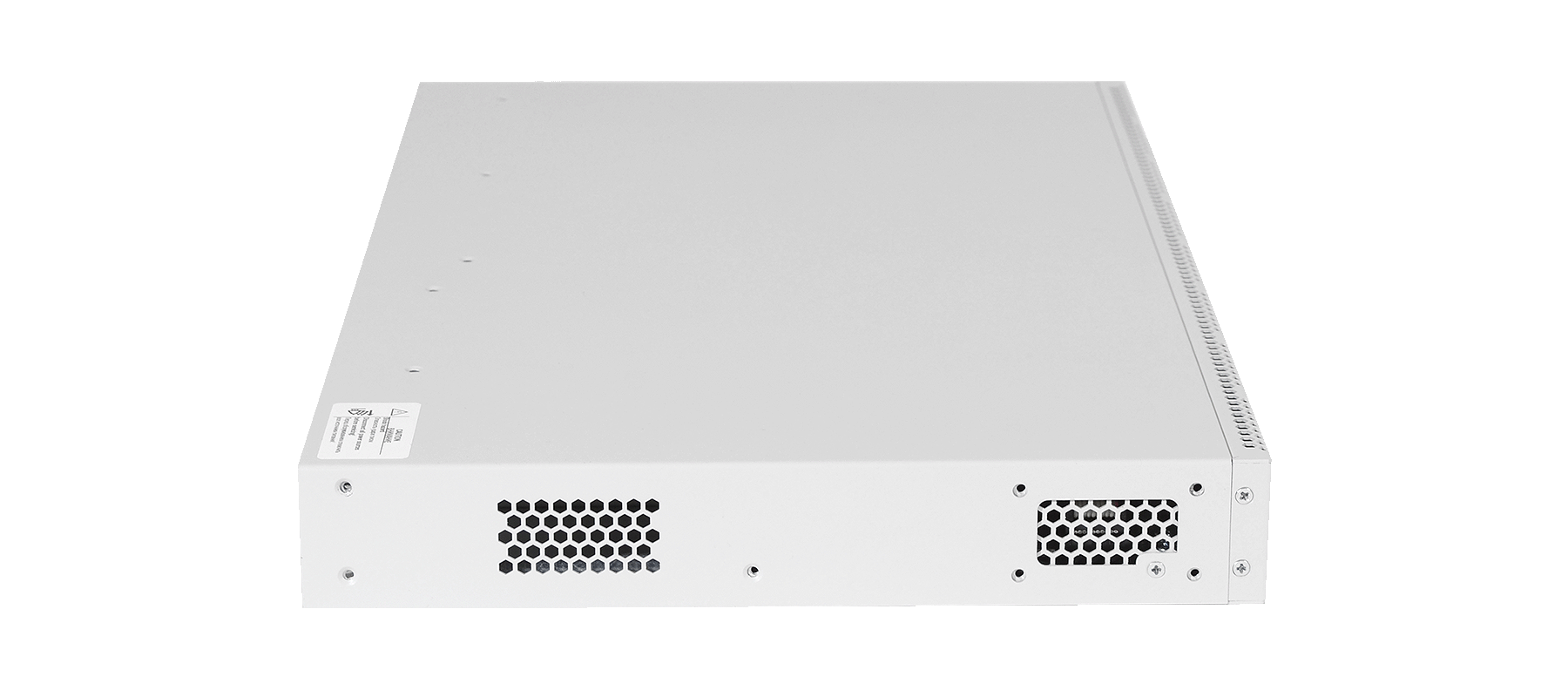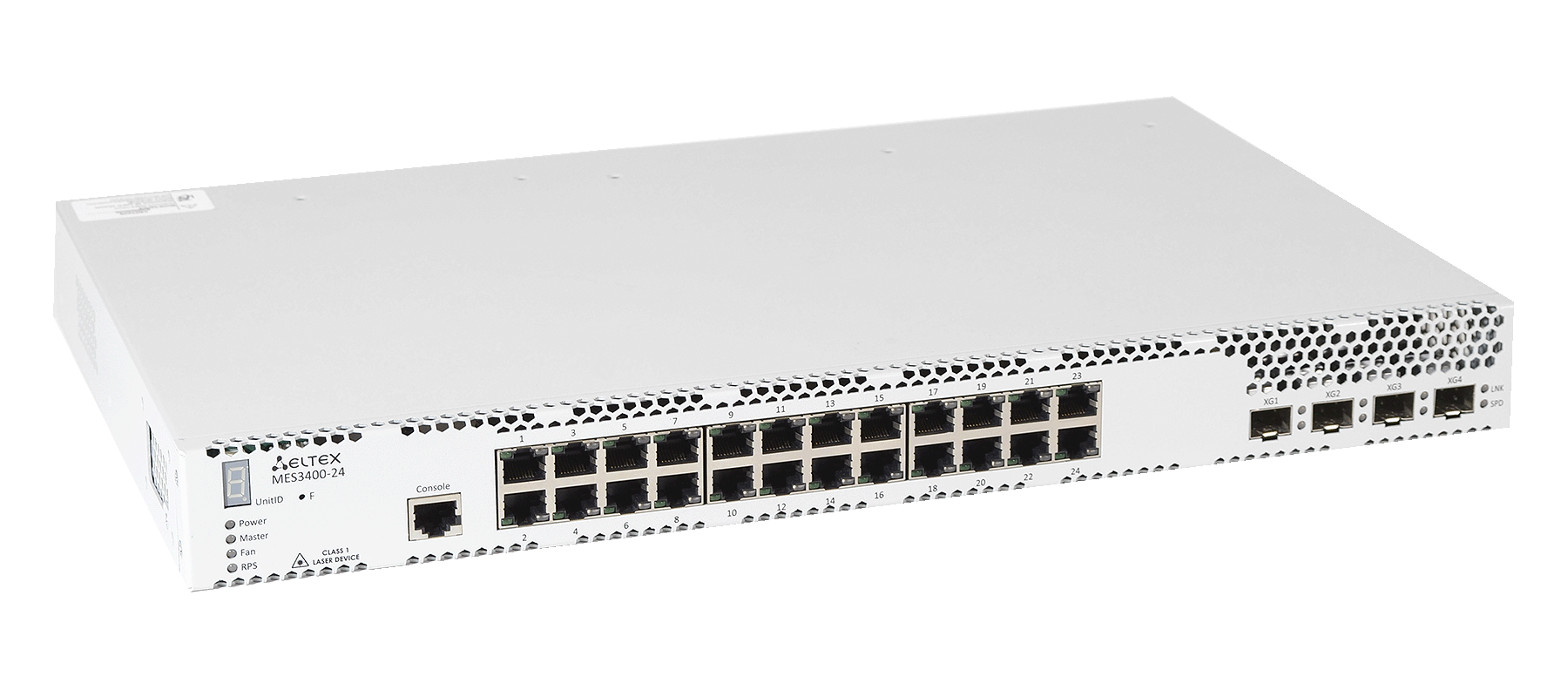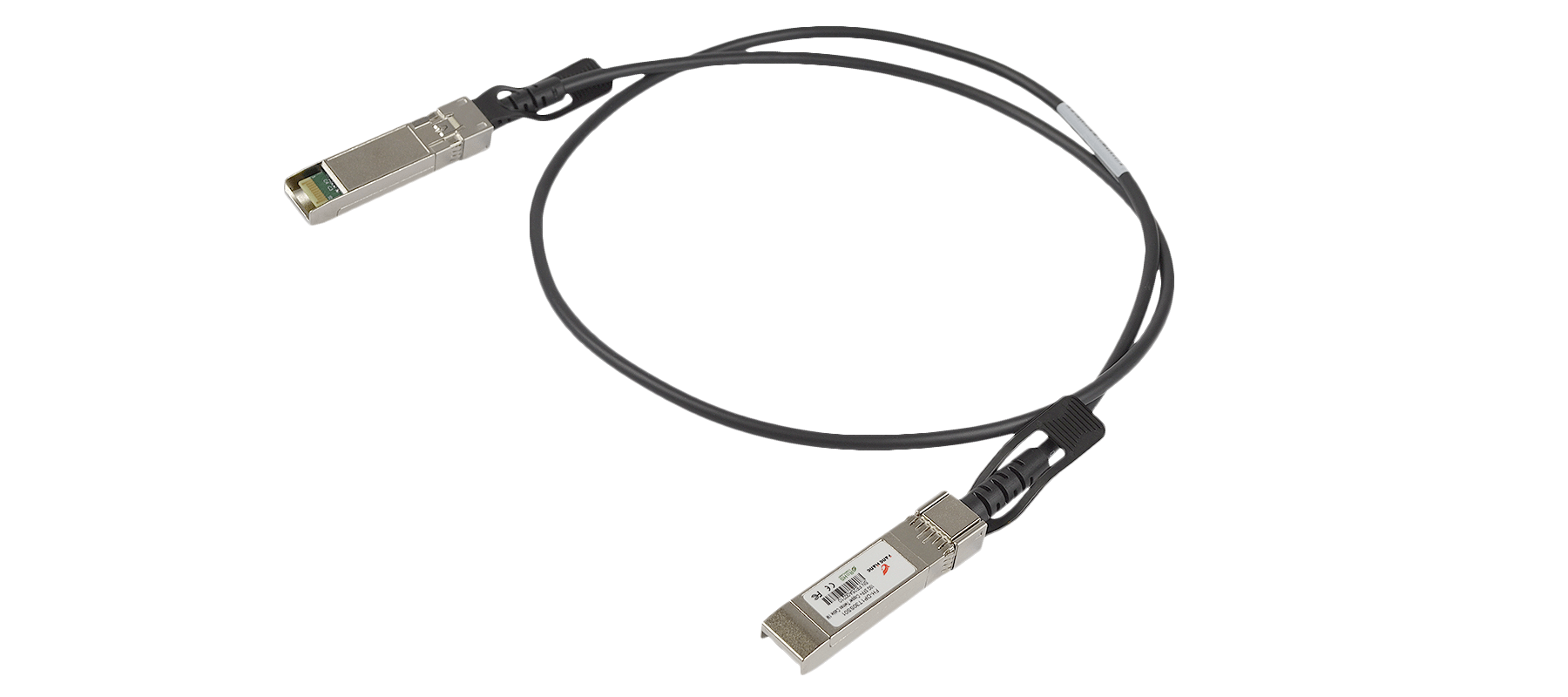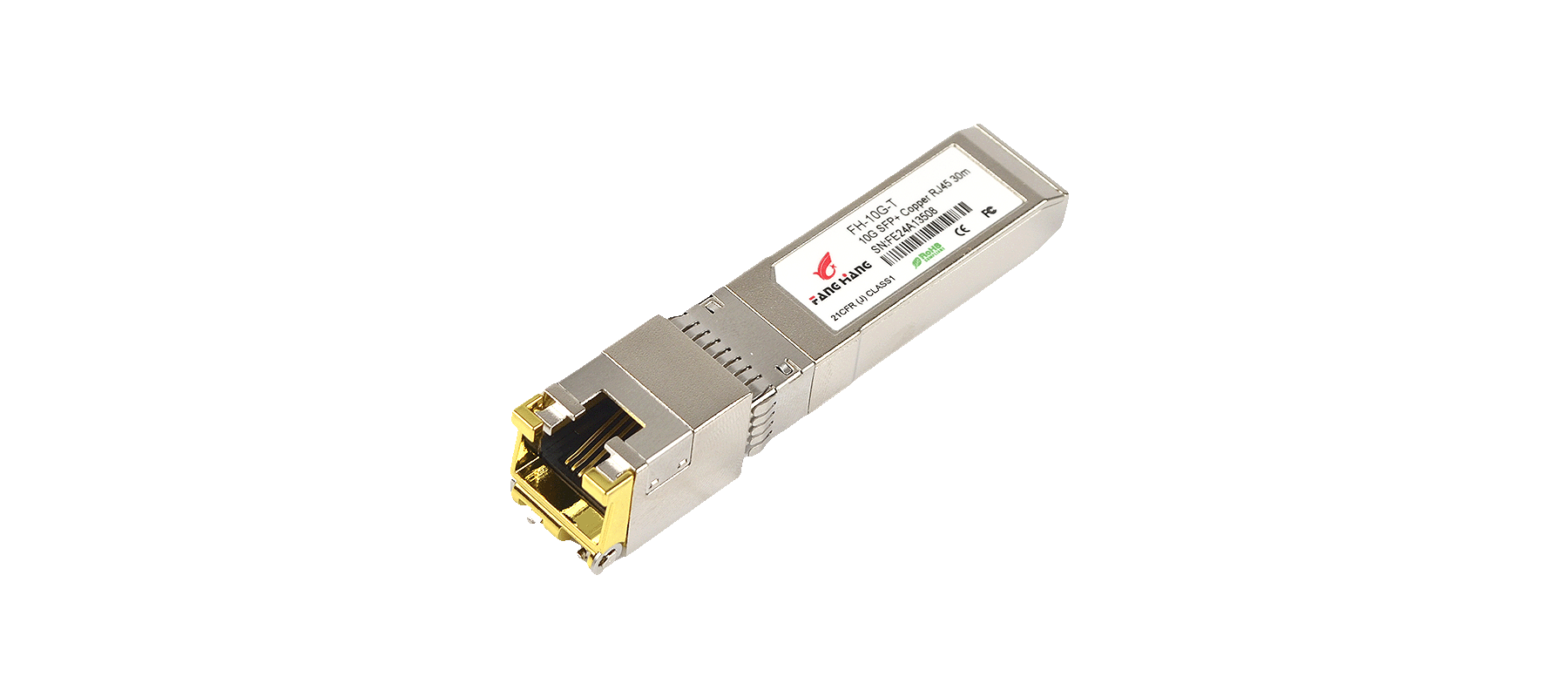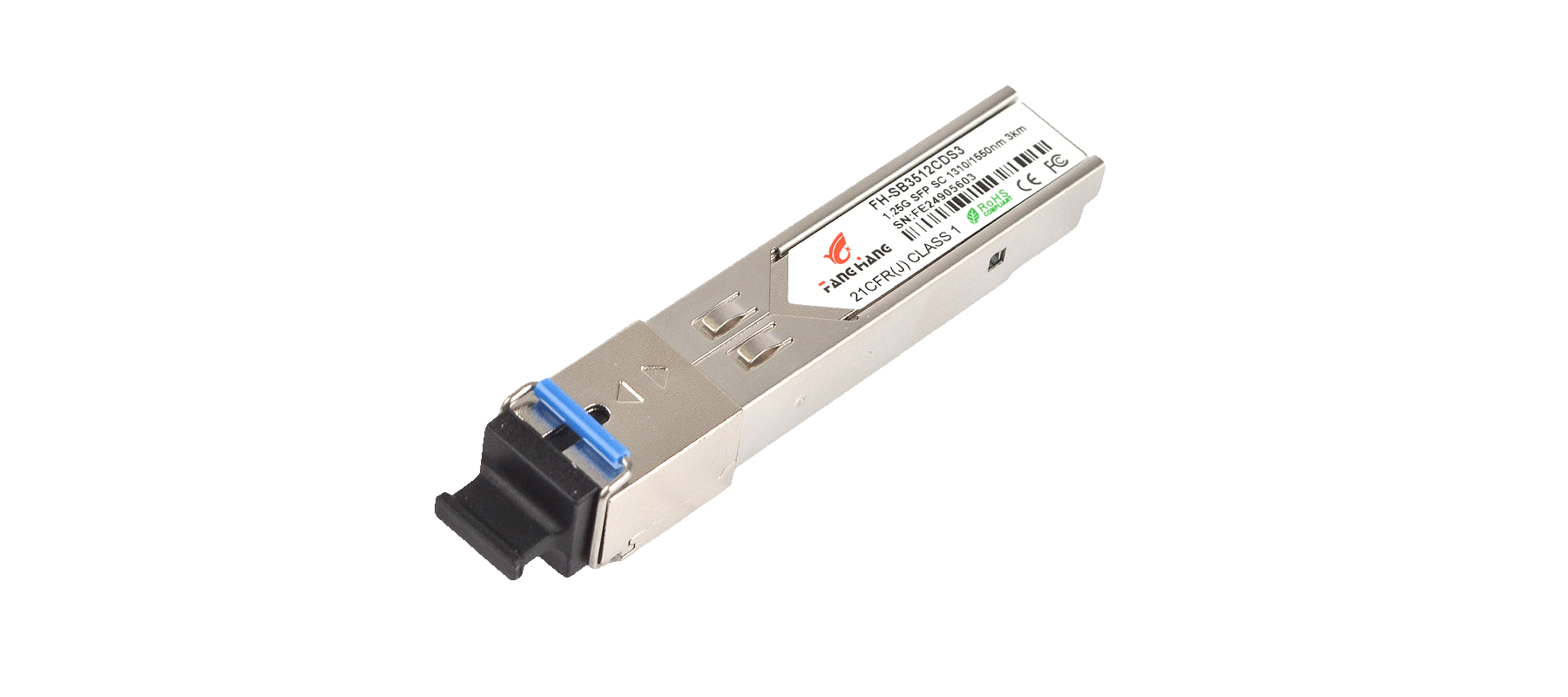Aggregation Switch MES3400-24
- Level:
- L3
- Bandwidth:
- 128 Gbps
- Interfaces:
- 24x1G, 4x10G SFP+
- Power supply:
- AC/DC


Description
MES3400 new generation switches can be used in service provider networks as aggregation or transport switches. They ensure high performance due to the universal interfaces operating at speeds of 10 Gbps or 1 Gbps. The benefits of MES aggregation switches include advanced L2 functions, support for static and dynamic routing, hot-swappable redundant power modules.

Specifications
- Level:
- L3
- Bandwidth:
- 128 Gbps
- Interfaces:
- 24x1G, 4x10G SFP+
- MAC table:
- 32768
- ARP:
- 1000
- Dynamic routing:
- RIP/OSPF
- Power supply:
- AC/DC
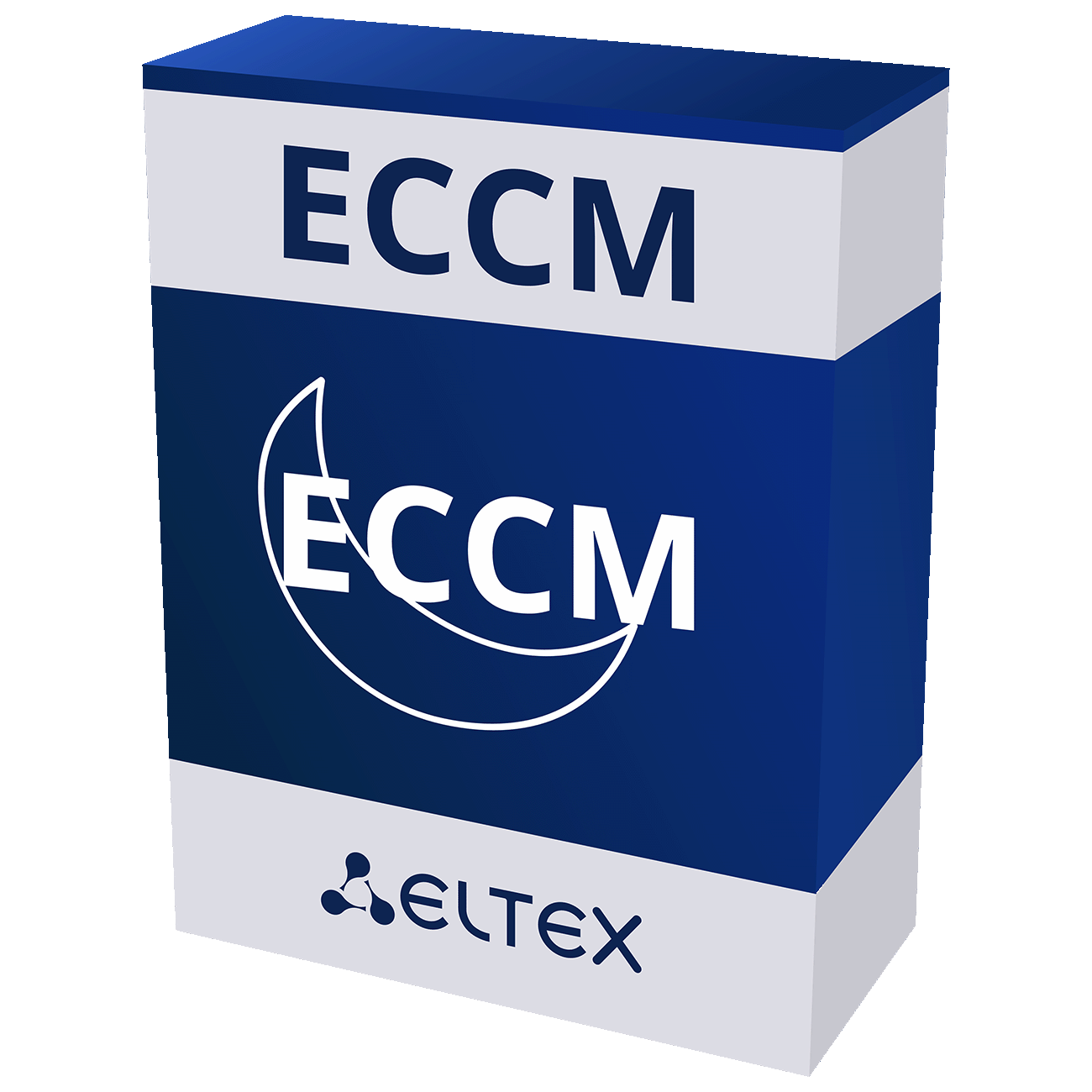
Related products






Documents and files
Firmware Version 10.4.3.1
Added:
- Added support for Dying Gasp in the stack;
- Added SQinQ support in the stack;
- Added QinQ support in the stack;
- Added support for Rate-limit in the stack;
- Added support for Per-VLAN Access List in the stack;
- Added support for Ethernet OAM in the stack;
- Added LBD per VLAN support;
- Added a new SNMP OID for reloading arbitrary stack units;
- Added the ability to enable the trust of someone else's option 82 on untrusted DHCP Snooping interfaces;
- Added support for the Filter-ID RADIUS attribute;
- Additional messages have been added to the ZTP logs;
- Added support for the CEF format for SYSLOG messages. The format of some SYSLOG messages has been fixed;
- Added support for processing traffic with a PRP header;
- Added support for LLDP Dot3TLV Power-via-MDI;
- Added support for dry contacts for MES37xx;
- Added the ability to add the TCP port number of the server when working with the copy and backup server commands;
- Added synchronization of all software images for all units in the stack;
- Added information about default settings to the show stack command;
- Added a command to disable the serdes parameter check.
Fixed:
- Fixed an error where the switch did not respond to an SNMP request with the report flag not set;
- Fixed an error where the switch did not return all OID values during the SNMP survey of the ISS-ENV-MIB tree;
- Fixed an error that returned an incorrect value for the temperature of the switch via SNMP;
- Fixed IPv6 traffic routing error;
- Fixed an error in the operation of the F button;
- Expanded the range of ports used in the stack for MES2411X devices;
- Fixed errors during stack assembly;
- Fixed an error when enabling RPVST in the stack;
- Fixed an error where backup units in the stack might not connect to the master when they were rebooted at the same time;
- Fixed the behavior of backup units in the stack when sending logs with incorrect severity;
- Fixed an error in synchronizing EOAM UDLD command objects with backup threads;
- Fixed loss of routed traffic when transferring between backup units and the master unit in the stack;
- Fixed cyclic reboot of a unit when returning it to the stack;
- Fixed errors that appear when navigating to the System Resources page in the WEB interface;
- It is forbidden to use VLAN 4095 in sQinQ commands;
- Fixed an error in synchronizing sQinQ commands with backup units;
- Fixed an error that causes the device to reboot when trying to delete sQinQ rules;
- Fixed an error when removing SQinQ override rules from LAG interfaces;
- Fixed an error where the default IP 192.168.1.239 was not deleted after configuring VLAN 1;
- Fixed the maximum number of static IPv4 routes;
- Fixed the error of deleting static routes when updating the software to version 10.4.2 and higher;
- Fixed an error that caused an emergency reboot when saving the configuration;
- Fixed the error of incorrect blocking of the user by setting up login block-for;
- The severity threshold for events recorded in the default-syslog-file has been reduced;
- Fixed an error with incorrect processing of fragmented packets on the CPU;
- Optimization of the output speed of the PoE configuration;
- Unconnected units have been removed in the output of the show power inline command;
- Fixed an error of incorrect reading of temperature sensor data in the output of show env;
- Fixed incorrect display of Firmware version in show system information;
- Fixed an error where the ACL incorrectly filtered ARP frames;
- Fixed an error when performing rate-limit input for LAG on the stack;
- Fixed an error in the Dot1x VLAN optional for MAB authorization;
- Fixed an error where the value of the Calling-Station-ID field was incorrectly substituted when trying to reauthorize the Dot1x client using EAP-TLS;
- Fixed an error in Port-isolation with LAG on the MES2428 device;
- Fixed an error that occurs when reinitializing the PoE controller;
- Fixed an error that caused the L3 functionality to stop working when sending a large number of TCP messages to the Syslog server;
- Fixed an error where the lldp med-app-type voice vlan vlan-id setting disappeared from running-config after using the switchport voice vlan command;
- Fixed an error where the VLAN attribute from the RADIUS server did not work in conjunction with the Voice VLAN;
- Fixed an error that occurs when the switch processes a fragmented SNMP packet;
- Fixed an error where the link on XG ports with 1G copper modules did not switch to the UP status.
Previous versions
Firmware Version 10.4.2.1
Added:
- Added the collaboration of IP Source Guard and MAC-based VLAN;
- Added stacking support.
Fixed:
- Fixed an error where AAA authentication mode break was not working;
- Fixed the removal of default route settings when upgrading from older software versions;
- Fixed L3 traffic failure in Dot1x guest-vlan;
- Fixed an error related to the loss of traffic in the ring in the scheme with MSTP+GVRP;
- Improved device stability;
- Fixed an error that caused VRRP groups to become inoperable;
- Fixed an error in the OSPF operation that causes the neighborhood to hang in the Exchange state;
- Fixed an error when using the default interface command that causes the switch to freeze;
- Fixed an error where DHCP Discover does not go through LAG;
- Fixed an error when trying to create an L3 VLAN interface;
- Fixed an error that causes the device to freeze when Port-Security is triggered;
- Fixed an error leading to incorrect cleaning of the MAC table when receiving BPDU TC;
- The distribution of ifindexes in the stack has been changed.
The following functionality has been adapted for the stack:
Jumbo frame
Support and monitoring of various SFP modules
Cable diagnostics (Virtual Cable Testing)
PoE
F-button
Working with the battery
Ethernet port settings
Combo ports
MAC Address Table
VLAN
MBV/PBV
Voice vlan
xSTP
ERPS
Loopback Detection
Channel aggregation
LLDP
Static routing
DHCPv4-relay
OSPF
Queues
CoS/DSCP mapping
Trust in the labeling of incoming traffic
Service policies
Management traffic labeling
Access control lists (except offset and acl per vlan)
DHCP control functions
DHCPv6 monitoring functions
ARP control functions
IP monitoring functions
MAC Table control functions
Broadcast traffic monitoring functions
802.1x, MAB
AAA
SNMP
DHCP Server
Port Mirroring
DNS client
Logging
SNTP
Firmware Version 10.3.6.13
Fixed:
- Fixed a bug in LLDP where the LLDP frame was dropped if there was a small-format Power Via MDI TLV.
Firmware Version 10.3.6.11
Added:
- Added a command to delete the ssh server-address setting;
- Added a command that disables comparing the IP address in the Next server IP address field and the IP address in the ip dhcp relay server configuration;
- Added the ability to change the standard buffer utilization values of batch processes;
- Added support for Accounting for Dot1x/MAC using the RADIUS protocol;
- The output of the show interfaces status command looks like a similar command on MES23xx/33xx/35xx/5324 devices.
Fixed:
- Improved command stability;
- Fixed the hang of the switch when displaying the current configuration;
- Fixed an error that leads to a complete loss of device control;
- Fixed a problem with the switch hanging when executing the default interface range;
- Fixed an error with the speed setting in line telnet/ssh;
- Fixed an error that caused Web interface pages to not load;
- Fixed an error where the cost in STP was incorrectly calculated for interfaces;
- Fixed a problem with the switch hanging when changing the STP mode from RSTP to RPVST;
- Fixed an error where there was no L3 access to the switch after reboot;
- Fixed an error that freezes the SSH session when saving the configuration to the SFTP server;
- Fixed an error where the source ip was incorrectly specified in the SNMP response packets;
- Fixed an error where the POWER-ETHERNET-MIB poll::pethMainPseConsumptionPower returned a value in deciwatts instead of watts;
- Fixed an error that displayed an extra log about duplicating a link local IPv6 address;
- Fixed a dot1x PC authorization error when using RADIUS VLAN Attributes and Voice VLAN together;
- Fixed an error leading to TCP session reset;
- Fixed an error that caused high CPU usage when connected to the switch by a telnet client on TCP port 22.
Firmware Version 10.3.6.6
Added:
- Added a method for encrypting passwords in the CLI using the SHA512 algorithm. ATTENTION. If there are users with a 64-character password, the password must be replaced with a shorter one before updating;
- Added a limit on the number of unsuccessful authorization attempts in the Web;
- Added the ability to specify the number of unsuccessful authorization attempts to log in to the CLI and Web;
- Added the Service-Type attribute to the RADIUS request when authenticating a user using the Dot1x and MAB protocols;
- Increased the maximum key size when configuring radius-server and tacacs-server host to 128;
- Added the setting for option 150 for the DHCP server.
Fixed:
- Fixed a bug where the Tunnel-Private-Group-Id attribute was not processed if the Tag field was present;
- Fixed a bug where authentication via the Dot1x protocol did not work.
Firmware Version 10.3.6.3
Added:
- Added the ability to download configurations from TFTP/SFTP servers via WEB interface;
- Added the ability to choose between MAC and 802.1x authentication.
Fixed:
- Fixed a bug where the original broadcast DHCP Discover was switched on Uplink in a scheme with configured DHCP Relay within the same VLAN;
- Fixed a bug where the lease of an IP address was not renewed in a scheme with configured DHCP Relay within the same VLAN;
- Fixed a bug that caused incorrect display of fan speeds when polling via SNMP;
- Fixed a bug where a GET request would return NULL if it contained an invalid OID;
- Fixed a conflict between the global voice vlan id and active port-channel settings;
- Fixed a bug where the radius vlan attribute did not work in multi-session mode;
- Fixed a bug with simultaneous operation of Dot1x and MAB authorization.
Added:
- Added the ability to enable DHCPv4/v6 snooping on 64 VLANs;
- Added the ability to set an IP address for accessing the snmp community;
- Added support for the Session-Timeout Radius attribute;
- Added support for the Termination-Action Radius attribute;
- Added support for the Cisco GLC-BX SFP module;
- Added verification of the current software version with the one received via DHCP Option 43, if the versions match, the software will not be updated;
- Added the ability to set a MAC ACL for a host with a MAC address 00:00:00:00:00:00.
Fixed:
- Fixed an error where the lldp med-app-type voice vlan vlan-id string disappeared from running-config after configuring the switchport voice vlan;
- Fixed an error where the ssh auth-type ip setting disappeared from running-config after ssh restart SSH Server error fixes;
- Fixed an error where speed matching with the optical 100M SFP module did not work;
- Fixed an error where the VLAN was not deleted from the port when executing the default interface command;
- Verification of the LACP Admin Key received from the partner is disabled;
- Fan thresholds have been adjusted for the MES2448B device.
Firmware Version 10.3.5
Added:
- Added Rapid-PVST functionality.
Fixed:
- Fixed an issue where configuring backup server sftp led to high CPU usage;
- Fixed the conflict of adding VLANs to interfaces in general mode when Dot1x settings are configured on other interfaces;
- Fixed an error where the default logging setting was displayed in the configuration;
- Fixed an error that occurred when resetting the interface configuration;
- Fixed the error of applying startup-config after restarting the device;
- Fixed an error that causes the switch to freeze while booting a device with a large number of MSTP instances;
- Fixed the problem of unicast ARP packet flooding when ARP Inspection is enabled.
Firmware Version 10.3.4
Added:
- Added support for the RADIUS VLAN attribute for Dot1x;
- Added dynamic distribution of SQinQ and MBV rules;
- Added the ability to change the password using a request from the TACACS+ server;
- Added the ability to issue a DHCP address by a DHCP server by interface number;
- Added counters for ACL rules;
- DNS Client added;
- Increased the maximum number of L3 interfaces to 20;
- Increased the maximum number of L3 IPv4 Unicast routes to 2048;
- Increased the maximum number of L3 IPv6 Unicast routes to 512.
Fixed:
- Fixed a bug when sending syslog messages in an SSH session;
- Improved stability of the ERPS protocol;
- Fixed a bug when processing Voice VLAN events;
- Fixed problems with Voice VLAN operation on ports in general mode;
- Fixed incomplete recording of information when redirecting show tech-support to a file;
- Fixed the grep function for the show tech-support team;
- Fixed an error saving a description consisting of several words;
- Added the ability to write the interface type and identifier in commands together and separately;
- Implemented auto-completion of the interface name by Tab;
- Fixed type and values for the eltexPhyTransceiverInfoDiagnosticSupported SNMP table;
- Fixed return values for the SNMP table IF-MIB::ifHighSpeed;
- Fixed visual and syntax errors in MIB files;
- Fixed a bug when removing the switch from the TACACS+ server;
- Fixed interface initialization error when booting after upgrading the switch from older versions;
- Fixed bugs that cause the management switch to hang;
- Fixed a bug when breaking Telnet sessions;
- Fixed pagination when connecting via SSH;
- Fixed the output of the show ip dhcp server pools command.
Firmware Version 10.3.3.1
Added:
- Added support for MES3400-24F and MES3400-48 devices.
Fixed:
- Fixed the problem with incorrect routes when the switch receives the address via DHCP via DHCP-relay.
Firmware Version 10.3.3
Added:
- Added support for DHCP packets with Broadcast flag in DHCP Relay;
- Added discard-shutdown option for Port Security;
- Added show-command to view list of ACL rules on interfaces;
- Added the ability to add ACE description;
- Added the ability to delete multiple static routes by mask or all at once via no ip route command;
- Added interface statistics for ARP Inspection;
- Added information about interface media-type to show interfaces status output;
- Added syslog messages display in CLI for TELNET/SSH protocols;
- Added the ability to configure netmask in /xx prefix length format;
- Added show ip route command to show tech-support output;
- Added support for hardware IPv6 routing;
- Added support for dynamic routing protocols OSPFv2/3, RIPv1/2.
Fixed:
- Fixed incorrect MAC address removal from MAC table after exceeding ARP timeout for nexthop static routes;
- Fixed adding incorrect padding for DHCP packets in DHCP Relay;
- Adjusted IGMP Snooping queue limits on CPU to minimize multicast delays with a large volume of IGMP messages;
- Fixed bug in MSTP which caused network loops after the reboot.
Firmware Version 10.3.2
Added:
- Added Voice VLAN feature;
- Added the ability to run Voice VLAN and Dot1x together;
- Added SNMP Trap for Storm Control;
- Added SNMP Trap for Port Security;
- Added logging of critical errors;
- Removed unnecessary firewall messages when connecting via Telnet/SSH to secondary IP addresses;
- Added protection from upgrading to unsupported SW version;
- The System Contact and System Location fields are now empty by default;
- Added L2 support code to SNMP OID sysServices;
- Added the ability to change the parameters of the current user without breaking the session;
- Added the ability to switch to the global configuration mode using the "configure" command;
- The "show ip binding" command is now available to a user with privilege level 1;
- The "show logging" command is now available to a level 1 user;
- Improved appearance and options for configuring VLAN via the WEB interface;
- Added system description command.
Fixed:
- Fixed a bug where the device terminated the session when entering more than 20 characters in the login;
- Fixed removal of Multicast-TV VLAN from all ports when deleting VLAN;
- Fixed switch freezing when performing cable diagnostics via WEB;
- Fixed switch freezing when trying to connect externally via SFTP;
- Fixed a bug where it was impossible to replace a dynamic DHCP Snooping entry with a static one;
- Fixed port blocking issue after reboot when STP is globally disabled;
- Fixed issue with default gateway configuration when receiving DHCP option;
- The System Contact and System Location fields are set to empty by default.
Firmware Version 10.3.1
Added:
- Added support for hardware IPv4 routing;
- Added VRRP support.
Fixed:
- Fixed an issue that caused devices to reboot when interacting with DHCP server binding entries.
Firmware Version 10.2.10
Added:
- Added partial support for Multiple failure processing in ERPS;
- Implemented a mechanism for interacting with ERPS subrings;
- Implemented DHCP server feature;
- Added None method for authorization;
- Implemented Guest and Unauthenticated VLAN features;
- Implemented cause of reboot monitoring via SNMP;
- Added command to enable DHCP-relay for VLAN.
Fixed:
- Fixed incorrect simultanious work of DHCP-relay and DHCP-snooping;
- Increased the maximum number of characters in username to 64;
- Fixed bug with polling SNMP tables when saving the configuration;
- Fixed error when creating interface VLAN in WEB;
- Redesigned VLAN configuration page in WEB;
- Fixed the mechanism of adapting the AAA configuration to the new syntax.
Firmware Version 10.2.9.4
Added:
- Added authorization using SSH keys;
- Added "spanning-tree bpdufilter" command hint when configured in interface-range context;
- All possible special characters for username and SNMP commands are now supported;
- Increased the maximum number of characters in the name, hostname, description fields;
- Increased the maximum number of characters in the name, hostname, description fields;
- DHCP opt 82 and PPPoE IA settings are now separated;
- Added MAC address value to show system info output;
- Added support for the following cryptographic algorithms in SSH: aes192-cbc, aes128-ctr, aes192-ctr, aes256-ctr;
- Added Calling-Station-Id field in access-request packet for 802.1x;
- Added the ability to completely change the configuration from a file without rebooting the device.
Fixed:
- Improved stability of the ERPS protocol;
- Fixed incorrect display of "ipv6 nd inspection" command;
- Fixed interfaces status changing when updating the device;
- Optimized logging of executed commands when using "write startup-config";
- Optimized "show running-config command" output;
- Improved "spanning-tree bpdufilter enable" command hint;
- Transceiver in/out power via SNMP is now displayed in dBm.
Firmware Version 10.2.8.2
Added:
- Implemented cold/warm startup logging;
- Implemented chain authentication method for AAA;
- Added the ability to use both RADIUS and TACACS for authentication;
- Added the ability to set your own value in the NAS-Identifier field;
- Added the ability to configure the service policy without binding it to the interface;
- Added the ability to configure src and dst ports for DHCP Relay;
- Changed ZTP mode;
- Added support for the ERPS protocol;
- Added support for the HTTPS protocol;
- Added the ability to configure DHCP Relay without an IP address on client VLANs;
- Implemented IGMP-Proxy function for MES2424, MES2448 models;
- All ports in the WEB interface are now displayed for MES2448B switches.
Fixed:
- Fixed RX rate limit logging;
- Fixed xSTP work with LBD-frames;
- Fixed incorrect privilege assigning during RADIUS-authentication;
- Fixed dropping all traffic when setting rate-limit more than 1 Gbps;
- Configuring authorized-manager ip-source 0.0.0.0 0.0.0.0 allows authorization from any ip addresses;
- Optimized work with memory;
- Fixed tips for enable/disable commands;
- Fixed reboot and authentication SNMP-trap;
- Fixed possible duplication of the main MAC address from the MAC LAG of another device;
- Fixed work of dot1x port-control force-authorized in multi-session mode;
- Fixed STP operation when changing the status of a port on which STP is disabled, the MAC address table is no longer being flushed;
- Fixed problem with displaying multicast groups in the forwarding-database table;
- Fixed problem with IGMP-report processing in IGMP Proxy;
- Access to WEB-interface for users with privileges below 15 is prohibited;
- Fixed bootloader version view.
Firmware Version 10.2.7.2
Added:
- Added the ability to configure DCS on separate VLANs and interfaces;
- Configuring of logging to Syslog servers and local log files has been optimized;
- The number of configuration entries for logging to Syslog servers has been increased;
- Severity of syslog entries "TCP-4-Connection attempt to closed/non-active TCP port" has been changed to debugging;
- sysObjectID format has been changed;
- The speed of software update using TFTP on MES2424 and MES2448 has been increased.
Fixed:
- Fixed problem with limiting the number of groups when receiving IGMPv3 report;
- Fixed an issue where an IGMPv3 report containing multiple entries was not sent to the mrouter interface;
- Fixed issue with SNMP IPv6 targethost configuration;
- Fixed a bug in displaying the "no lldp transmit" and "no lldp receive" commands;
- Fixed problem with displaying 64-bit counters;
- Fixed problem with SNTP server configuration disappearing after reboot.
Firmware Version 10.2.7
Added:
- Added the ability to block IGMP Query on an interface;
- IGMP authorization via RADIUS is now supported;
- IGMP and VRRP packets L2PT encapsulation is now supported;
- The secure-permanent and secure-delete-on-reset modes are now supported in the Port-security module;
- Added SYSLOG message when trying to change the interface by the user in the Port-security module;
- 802.1x authorization is now supported;
- Added the ability to restrict TCP-SYN traffic for the Firewall module;
- IPv6 link-local addressing function is now supported in authorized manager;
- Storm-control now restricts known multicast traffic;
- To change the IP address on an interface, the 'no ip address' command is now optional;
- Entering the 'interface range' context can now be performed for arbitrary interfaces of the same type;
- The default parameters are no longer displayed in the configuration;
- Negotiation capabilities description and parameters, allowed for configuration via SNMP have been changed;
- Added the ability to view the MAC table for individual interfaces via SNMP;
- HW revision format of devices in 'show system information' output and corresponding SNMP oid now matches the vendor sticker;
- Monitoring capabilities of cooling fans have been expanded;
- The output of some SYSLOG messages has been changed;
- Added indication of the reboot initiator to the SYSLOG message and SNMP trap for the corresponding event;
- SYSINFO parameters overwriting was optimized when loading devices;
- Added the ability to use VCT in the WEB interface;
- Added the ability to define the description of Ethernet / LAG interfaces in the WEB-interface.
Fixed:
- Fixed errors in processing multicast traffic from the 239.x.x.x range;
- Fixed display of different types of IGMP mrouter interfaces in the configuration;
- Fixed a bug with enabling the QoS module;
- Fixed possible disappearance of the Class-map after reboot;
- Fixed disappearance of static MAC entries after reboot;
- Fixed disappearance of static ARP entries after reboot;
- Fixed disappearance of DCS module settings after reboot;
- Fixed incorrect display of addresses in the SYSLOG message;
- Fixed a bug with incorrect user authorization using TACACS + when connecting to the device's IPv6 interface;
- Fixed device reboot when trying to specify a domain name as an SNTP server;
- Fixed loss of access and restart of devices, when using telnet;
- Fixed 'show etherchannel port-channel' command output;
- Fixed display bootloader version in 'show bootvar' output;
- Fixed possible reboot of devices when polling the L2PT module table via SNMP;
- Fixed high CPU load during intence SNMP polling;
- Fixed a bug with assigning the same UDP ports when using logging and tftp;
- Fixed a problem with the disappearance of the manually assigned IP address through the WEB interface;
- Fixed a bug with displaying MAC-table entries when ingress-filtering is disabled.
Firmware Version 10.2.6.3
Added:
- Added the ability to block IGMP Query on the interface;
- Secure-constant and secure-delete-on-reset modes are now supported for port security.
Fixed:
- Fixed a bug when enabling QoS.
Firmware Version 10.2.6
Added:
- CPU can now process 802.1q double tagged traffic;
- Added the ability to add two 802.1q headers via MAC-ACL;
- xSTP protocols events logging is now supported;
- Rootguard feature for individual MSTIs was added;
- The setting for copying an 802.1p tag to an external 802.1q tag has been unified;
- IPv6 ND inspection is now supported;
- IPv6 ND RA guard is now supported;
- Increased the maximum number of interfaces with the enabled IPv6 ND RA guard feature;
- Added the ability to assign trusted ports for IGMP Snooping;
- Increased the number of processed packets limit in IGMP Snooping;
- Configuration/firmware files download status monitoring via SNMP is now supported;
- Added the ability to select the active software image via SNMP;
- Changed the format of interface names in the output of show commands;
- Default DHCP option 60 has been changed;
- Port-channel and Link-aggregation module are now enabled by default;
- Default logging severity is now informational(6);
- Ability to periodically transmit Gratuitous ARP;
- CPU processing of the ARP messages has been changed;
- TACACS+ authorization of entered commands is now supported;
- Maximum number of authorized-manager entries was increased up to 100;
- Added the ability to configure IPv6 authorized-manager;
- Maximum number of NTP servers was increased up to 4;
- IPv6 ND RA guard is now supported;
- Selective QinQ egress on LAG interfaces is now supported;
- MAC-address flapping is now supported;
- QoS egress queues statistics on the interfaces is now supported;
- Ability to filter TCP traffic with SF flags is now supported.
Fixed:
- Fixed errors when configuring xSTP via SNMP;
- Fixed operation of restricted-role feature for MSTP;
- Fixed operation of LLDP port-id-subtype commands;
- Fixed errors in configuring MAC notification change via SNMP;
- Fixed errors when configuring DHCP server IP address via SNMP;
- Fixed DHCPv4 / DHCPv6 / PPPoE-IA snooping binding table overflow behavior;
- Fixed the switch reboot when working with static DHCPv6 Snooping entries;
- Fixed errors in configuring DCS module via SNMP;
- Fixed disappearance of static IGMP Snooping groups after reboot;
- Optimized configuration output when working with a large number of IGMP Snooping entries and a large number of active VLANs;
- Fixed display of queue-map regn-priority ipDscp commands in configuration;
- Fixed errors in configuring Class-map via SNMP;
- Fixed bug with switching between NTP servers when using IPv6;
- Fixed bugs with the inability of authorization on the device;
- Fixed bug when resetting password via boot-menu when RADIUS / TACACS + authentication was configured;
- Fixes in login / exec banner output;
- Fixed bug with restarting devices from SSH session;
- Fixed problems with copying empty software image via SFTP;
- Fixed output of VLAN module debug commands to a remote session;
- Fixed switch reboot when polling the switch via SNMP;
- Fixed display of device's uptime in the WEB-interface;
- Fixed switch reboot because of frequent switching between tabs in the WEB interface;
- Fixed freezing when working in the WEB-interface;
- Fixed DHCPv6 solicit / request packets duplication.
Firmware Version 10.2.5.2
Fixed:
- Fixed disappearance of port-channel load-balance settings after reboot;
- Fixed incorrect operation of DHCP Snooping with certain MAC addresses;
- Fixed memory leak when working with DHCP client;
- Fixed reboot when running IGMP Snooping;
- Fixed issue with freeing TCP sockets.
Firmware Version 10.2.5
Added:
- MES2448 is now supported;
- Boot file size is reduced;
- SFP-T is now supported;
- Ability to specify speed/duplex capabilities for auto-negotiation;
- Ability to clear the IGMP/MLD snooping groups table;
- Extended debug capabilities for IGMP snooping;
- Login/exec banner is now supported;
- Ability to disable the confirmation request for commands;
- Confirmation request for shutdown branch commands in global configuration mode;
- Changed show vlan and show ip IGMP snooping forwarding-database commands in the show tech-support output;
- Added show iss-health status command output to the show tech-support output;
- Added warning when running out of hardware resources for Protocol-based VLAN;
- Network-admin/operator RADIUS attributes are now supported;
- Ethernet-OAM is now supported;
- Dynamic ARP-inspection is now supported;
- MAC-based VLAN is now supported;
- Protocol-based VLAN is now supported;
- Disabling Dying Gasp is now supported;
- Battery monitoring disabling is now supported.
Fixed:
- IGMP snooping sparse-mode switching with high utilization of the IGMP snooping forwarding-database table was optimized;
- Fixed a hint for the no switchport egress-filter command;
- Fixed interruption of SNMP-query eltMesIssAaaMIB;
- Fixed reboot during eltexphytransceiverdiagnosticentry SNMP polling;
- Fixed reboot when reconfiguring static IGMP groups;
- Fixed missing logging of entered commands when using logging hostname-format;
- Fixed freezing when interrupting telnet sessions during command output;
- Fixed flushing of the IGMP snooping forwarding-database table when there are no subscriptions;
- Fixed an issue with high CPU utilization when MSTP recovering with 4094 VLANs configured;
- Fixed reboot when removing L2PT c interface settings;
- Fixed the correspondence of unregistered multicast traffic and CPU queue.


